Vancouver, British Columbia--(Newsfile Corp. - November 22, 2022) - Tower Resources Ltd. (TSXV: TWR) ("Tower" or the "Company") is pleased to report the results of follow-up till sampling performed recently on the new, high-grade Central gold grain dispersal train (see Tower's October 5, 2022 press release) 400 m west of the Lightning Zone on the Company's Rabbit North property near Kamloops, British Columbia, between New Gold's New Afton underground Cu-Au mine and Teck's Highland Valley open pit Cu-Mo mine (see Fig. 1). The new sampling confirmed the high grade of the Central Train and traced the train up-ice to its source area in preparation for an initial diamond drill test that Tower plans to conduct prior to the next expansion drilling campaign on the Lightning Zone due to the long delay in receiving assays from the August-September drilling program on this zone.
Follow-Up Till Sampling
In mid-October Tower collected 17 additional samples near the three discovery samples (Nos. 096, 245 and 246; see Fig. 2). The new samples were positioned to:
-
(a) Establish the width of the Central Train;
-
(b) Bridge the gap between the discovery samples and a historical Au-in-soil anomaly 300 m down-ice to the southeast;
-
(c) Determine whether the train extends up-ice as far as a belt of young, post-mineralization basalt flows 150 m to the northwest; and
-
(d) Establish whether the gold zone from which the gold grains are sourced strikes east-northeast parallel to the basalt flows and is exposed through a small "window" in the flows or strikes south-southeast parallel to the Lightning Zone and directly underlies the dispersal train.
Gold Grain Results
The 17 new till samples yielded from 40 to 452 gold grains (see Fig. 2). Most of the samples are as anomalous as those collected from the Dominic Lake Train that emanates from the Lightning zone and led to its discovery (see Tower's January 11, 2022 press release), confirming that the Central Train is a very significant train.
The concentration of gold grains is highest in the 150 m long segment of the train between the discovery samples and cover basalt flows. It is still elevated at 116 grains on the southern edge of the basalt, as originally mapped from scattered outcrops, suggesting that the actual basalt contact may be farther north. The anomaly intensity in this segment of the train does vary considerably but such variability is normal in source-proximal till samples due to the significant Au grade zoning that characterizes gold deposits. Further down-ice, the gold grain counts decrease systematically toward the Au-in-soil anomaly.
Gold Grain Size: Implications for Gold Grade
As explained in Tower's October 5, 2022 press release and clearly demonstrated therein by the similar Au grades of the Dominic Lake Train and its Lightning Zone source, the Au grade of the heavy mineral fraction of the till where the gold grains reside, calculated from the number of grains recovered from a sample and the measured dimensions of these grains, is predictive of the grade of the bedrock source from which the grains are derived, provided that the grade is normalized to the average 0.4% (1 particle in 250) heavy mineral content of till in Canada.
The Central dispersal train defined by the normalized Au grades of the heavy mineral fraction of the new samples (see Fig. 3) is shorter than but slightly wider than the train defined by the number of gold grains in the samples (see Fig. 2). As with the gold grains, the Au grades of the till samples near the head of the train vary considerably, suggesting that significant Au grade zoning will be present in the gold zone from which the gold grains are sourced.
Most importantly the average Au grade of the samples from the Central Train is 3.67 g/t, approximately three times higher than the 1.27 g/t average grade of the samples from the Dominic Lake Train (see Fig. 4). This strongly suggests that the average Au grade of the gold zone from which the Central Train is sourced is three times higher than the average Au grade of the Lightning Zone, making it a very attractive drill target. The higher grade of the Central Train is due to the presence of a significant number of large, sand-sized gold grains among the usual silt-sized population (see Fig. 5).
Next Steps
While the follow-up till sampling confirmed and adequately delineated the Central Train, it did not establish whether the gold zone from which the train is derived strikes east-northeast and is mostly covered by the young basalt flows or strikes south-southeast parallel to the Lightning Zone and directly underlies the train. Nevertheless, because the head of the train is well defined, a 150-200 m long, southwest-directed drill hole collared on the basalt should intersect the zone.
Tower plans to drill the inaugural hole on the Central Train, and possibly others nearby, prior to the next expansion drilling campaign on the Lightning Zone due to the long delay in receiving assays from the August-September drilling program on this zone. The drill area is readily accessible by road from Kamloops year-round.
Methods and Qualified Person
Overburden Drilling Management Ltd. (ODM) collected the till samples and processed them at the company's heavy indicator mineral laboratory in Ottawa, Ontario.
The samples were collected by David Hozjan, MSc., P.Geo. and Mathew Duffy, GIT. At each sample site, a pit was excavated into the C-horizon of the post-glacial soil profile, typically to a depth of 0.5-0.8 m, to reach minimally oxidized, structurally compact till, the subglacially deposited variety that is required for an effective survey.
The till from each pit was sieved at 8 mm to obtain approximately 12 kg of -8 mm material which, when further screened in the laboratory, typically yields approximately 10 kg of -2 mm fine sandy silt, the particle size fraction in which most gold grains reside.
Prior to extracting the heavy mineral fraction from the samples, ODM removed a representative 500 g split and further sieved it at 0.063 mm to separate the fine silt + clay fraction. This fraction will be analyzed geochemically in Kamloops by Actlabs Ltd., a laboratory certified as ISO/IEC 17025 Accredited (Lab 790) by the Standards Council of Canada. The samples are digested in aqua regia, then analyzed by FA/AA for Au and 34 other elements by ICP/OES. ODM normally includes in each submitted sample batch one or more splits of a blind (visually indistinguishable) quality assurance sample from a natural till section that contains consistently elevated levels of Au, Cu, Mo and other key elements.
Heavy mineral concentration was effected on the bulk of each sample using a shaking table modified by ODM to recover the fine, silt-sized gold particles that normally comprise 95% of the gold grains in till. The dimensions of each recovered gold grain were measured and the grain was classified as being still pristine, partially modified (physically deformed) or completely reshaped to gauge its relative distance of glacial transport.
The technical content of this news release has been reviewed and approved by Stuart Averill, P.Geo., a Director of the Company, and a Qualified Person as defined by National Instrument 43-101.
About Tower Resources
Tower is a Canadian based mineral exploration company focused on the discovery and advancement of economic mineral projects in the Americas. The Company's key exploration assets, both in B.C., are the Rabbit North copper-gold porphyry project located between the New Afton copper-gold and Highland Valley copper mines in the Kamloops mining district and the Nechako gold-silver project near Artemis' Blackwater project.
On behalf of the Board of Directors
Tower Resources Ltd.
Joe Dhami, President and CEO
(778) 996-4730
www.towerresources.ca
Reader Advisory
This news release may contain statements which constitute "forward-looking information", including statements regarding the plans, intentions, beliefs and current expectations of the Company, its directors, or its officers with respect to the future business activities of the Company. The words "may", "would", "could", "will", "intend", "plan", "anticipate", "believe", "estimate", "expect" and similar expressions, as they relate to the Company, or its management, are intended to identify such forward-looking statements. Investors are cautioned that any such forward-looking statements are not guarantees of future business activities and involve risks and uncertainties, and that the Company's future business activities may differ materially from those in the forward-looking statements as a result of various factors, including, but not limited to, fluctuations in market prices, successes of the operations of the Company, continued availability of capital and financing and general economic, market or business conditions. There can be no assurances that such information will prove accurate and, therefore, readers are advised to rely on their own evaluation of such uncertainties. The Company does not assume any obligation to update any forward-looking information except as required under the applicable securities laws.
Neither TSX Venture Exchange nor its Regulation Services Provider (as that term is defined in policies of the TSX Venture Exchange) accepts responsibility for the adequacy or accuracy of this release.
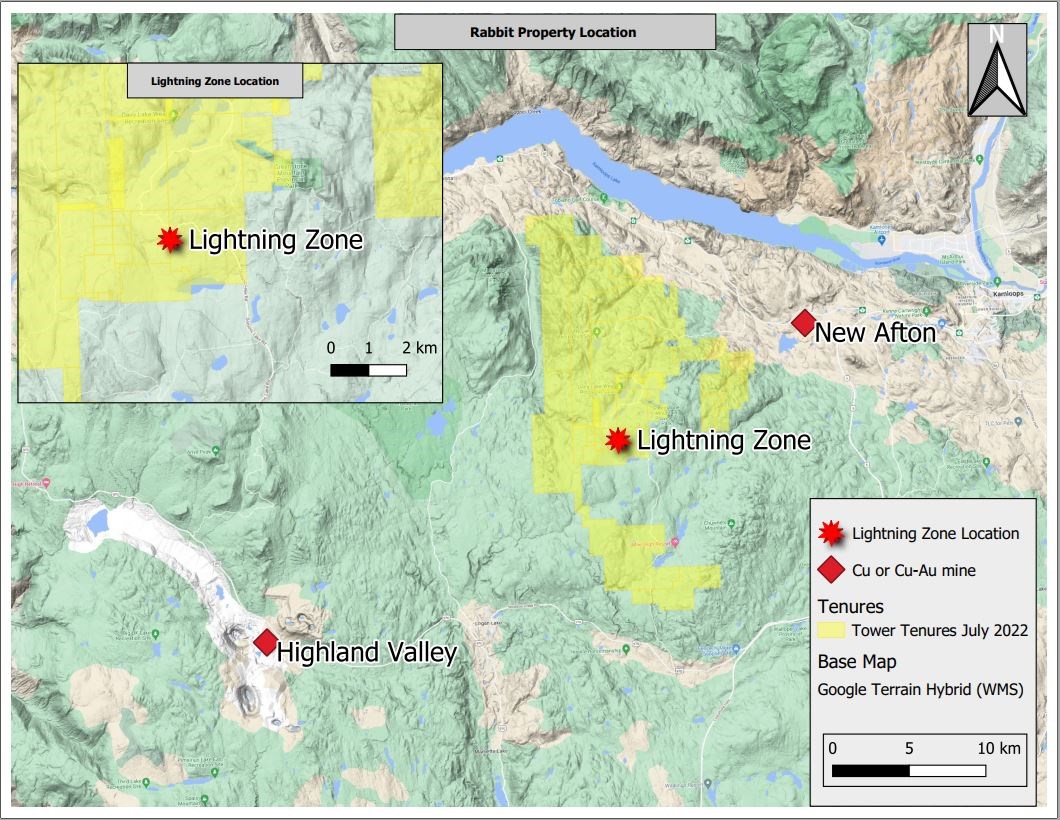
Figure 1 - Location of Tower's Rabbit North property relative to the active mines of the Kamloops district.
To view an enhanced version of this graphic, please visit:
https://images.newsfilecorp.com/files/5023/145224_2a02febc74b68a1d_002full.jpg
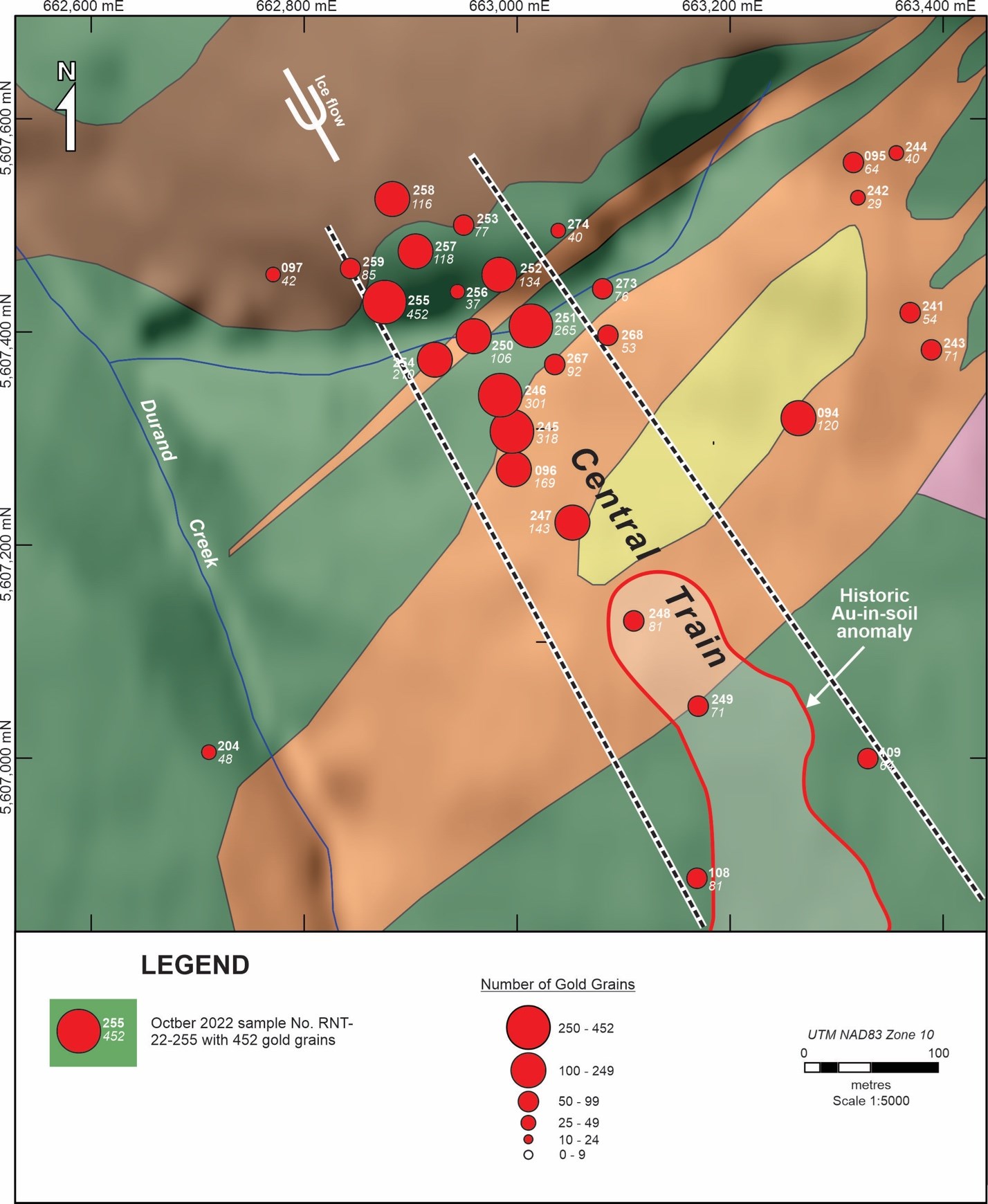
Figure 2 - Gold grain content the till within and near the Central Train.
To view an enhanced version of this graphic, please visit:
https://images.newsfilecorp.com/files/5023/145224_2a02febc74b68a1d_003full.jpg
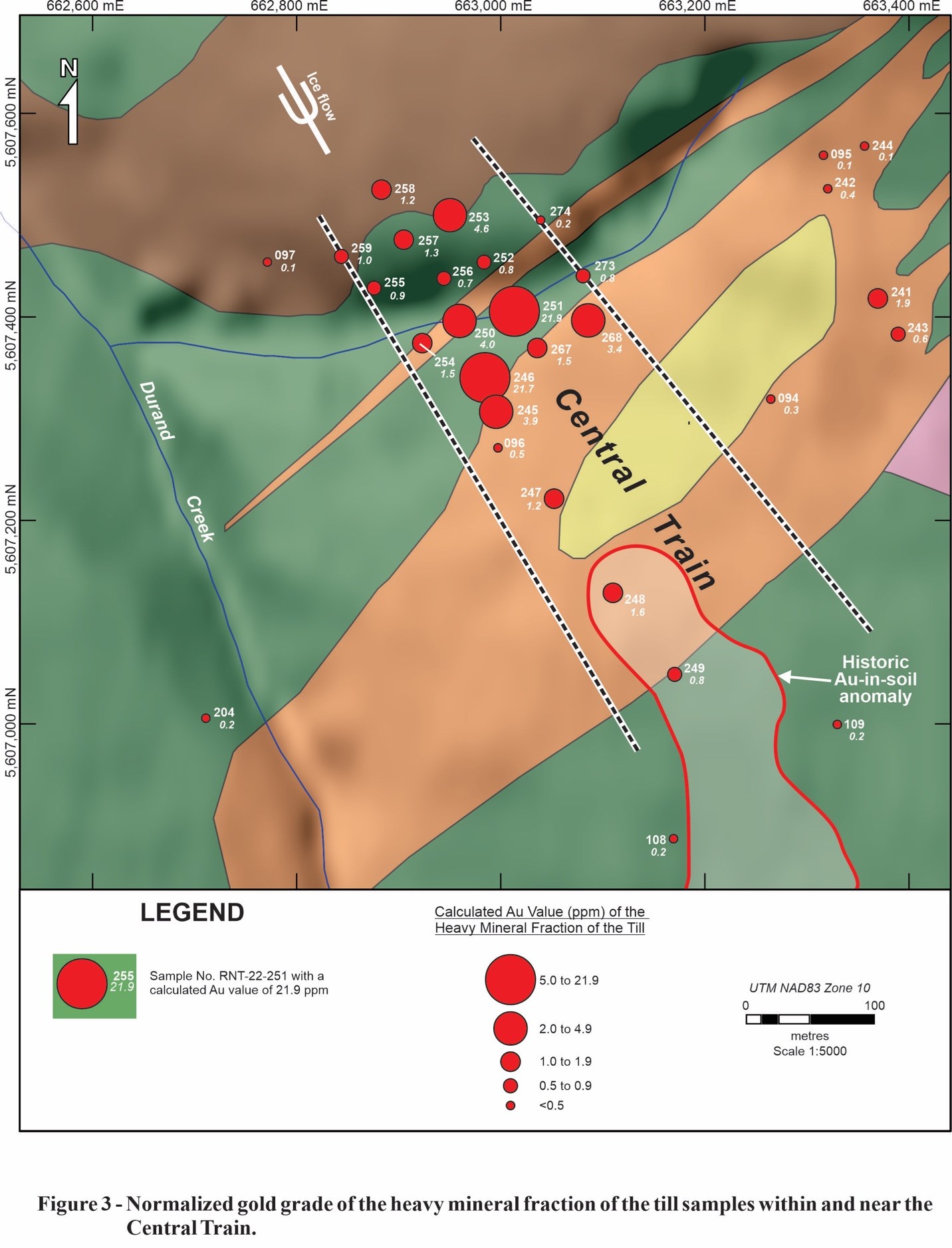
Figure 3 - Normalized gold grade of the heavy mineral fraction of the till samples within and near the Central Train.
To view an enhanced version of this graphic, please visit:
https://images.newsfilecorp.com/files/5023/145224_2a02febc74b68a1d_004full.jpg
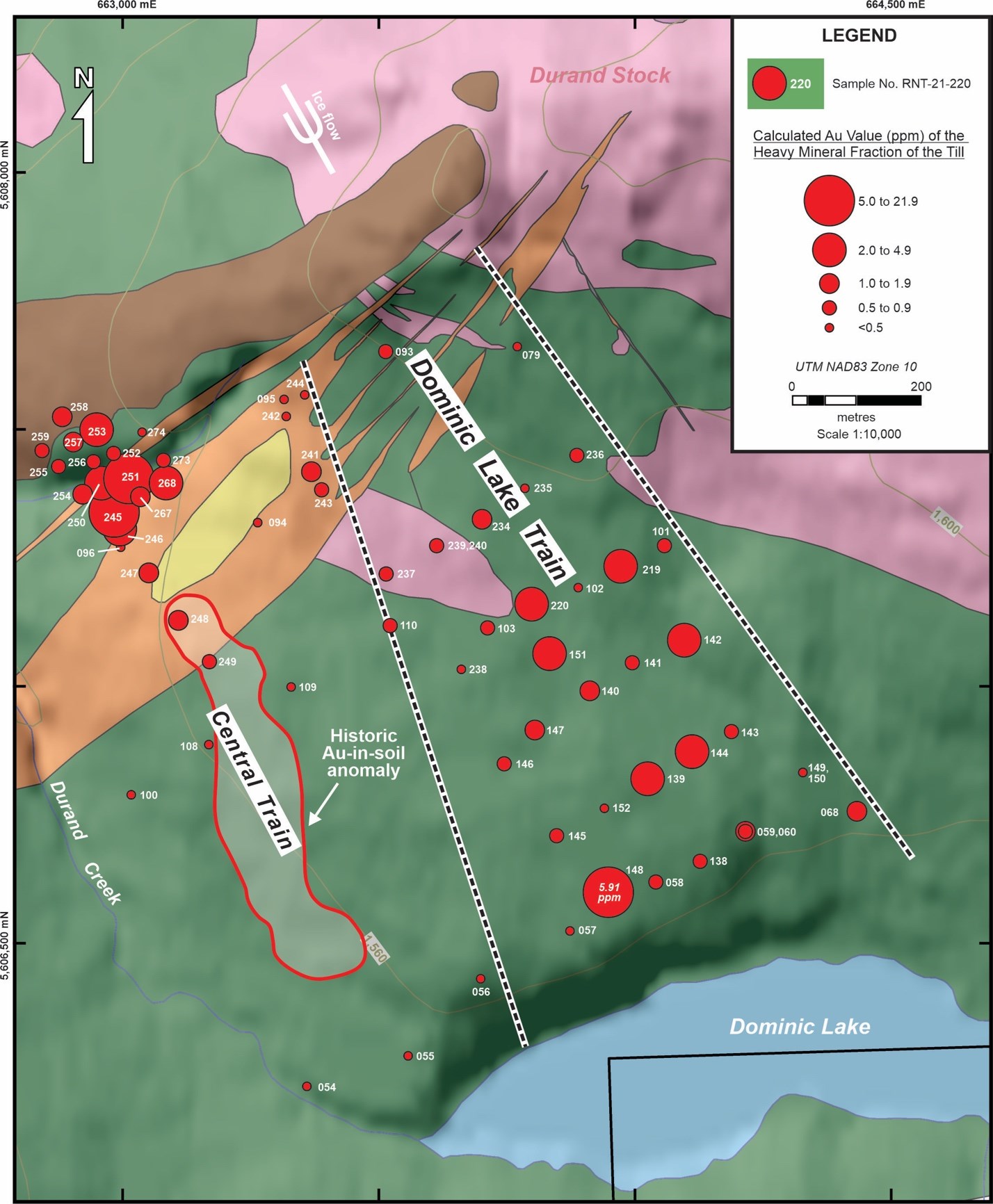
Figure 4 - Normalized gold grade of the heavy mineral fraction of the till samples within and near the Dominic Lake Train.
To view an enhanced version of this graphic, please visit:
https://images.newsfilecorp.com/files/5023/145224_2a02febc74b68a1d_005full.jpg
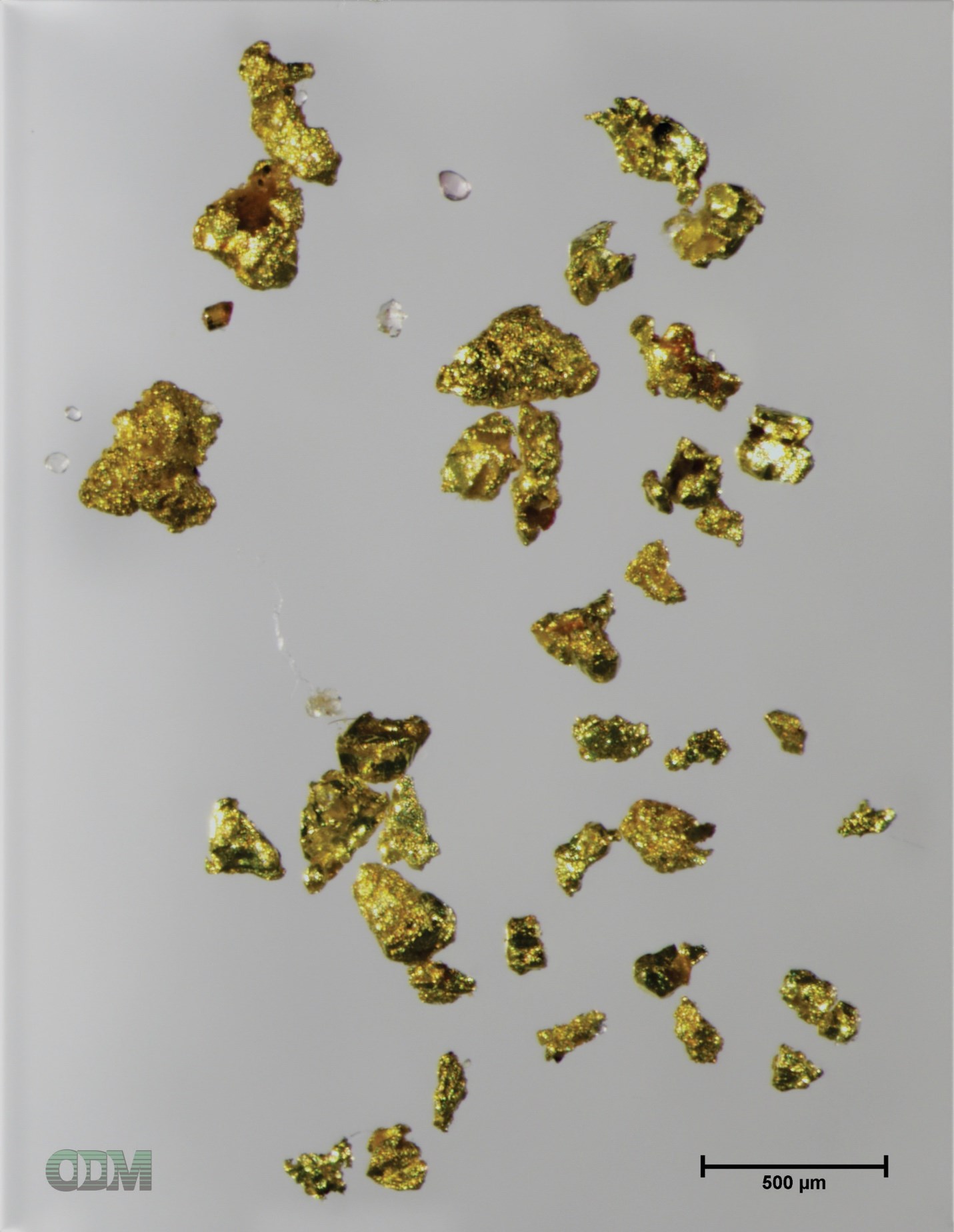
Figure 5 - Selection of gold grains from till sample No. RNT-22-246.
To view an enhanced version of this graphic, please visit:
https://images.newsfilecorp.com/files/5023/145224_2a02febc74b68a1d_006full.jpg
To view the source version of this press release, please visit https://www.newsfilecorp.com/release/145224

